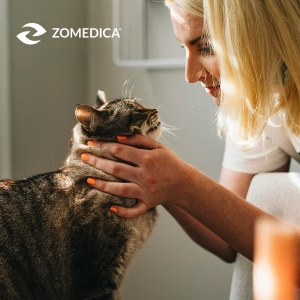What if a simple AI automation could recover over $300K a year for your clinic just by reducing no-shows?
In today’s complex healthcare landscape, provider organizations face mounting pressure to improve access, reduce costs, and enhance patient satisfaction. One persistent challenge? Missed appointments. No-shows not only disrupt care continuity but also lead to underutilized resources and lost revenue. Patient no-shows are a persistent and costly challenge for healthcare providers, affecting clinical operations, financial performance, and patient outcomes. Picture this:
A 10-provider clinic averaging 20 patients/day with a 15% no-show rate.
- 30 missed appointments/day × $150/visit = $4,500/day
- AI cuts no-shows by just 25% → ~8 extra visits/day → $1,200/day recovered
- Annualized: $300,000+ in recovered revenue
Fortunately, artificial intelligence (AI) offers a powerful solution, and Vervint is helping providers harness it. Implementing an AI tool to support no-show prediction and scheduling optimization delivers value to healthcare providers across clinical, operational, and financial dimensions. Let’s take a deeper look at the consequences of patient no-shows, the issues that have made this a historical challenge for providers to tackle, the value that can be realized by optimizing scheduling, and how Vervint can help!
The Cost & Consequences
Financial Impact
Each missed appointment can cost a provider between $100 and $500+ in lost revenue. When scaled across thousands of appointments, this translates into millions in annual losses. For example, one provider system reported over 16,000 no-shows, prompting a deeper investigation into root causes and mitigation strategies.
Operational Disruption
No-shows create inefficiencies in clinic workflows:
- Underutilized staff and resources: Providers and support staff are left idle, while other patients may be waiting for appointments.
- Scheduling chaos: Gaps in the schedule are hard to fill last-minute, especially in specialties with long waitlists.
- Delayed care: Missed appointments can lead to postponed diagnoses or treatments, especially for chronic conditions.
Patient Experience and Health Outcomes
Missed appointments disrupt continuity of care and can lead to:
- Worsening health conditions due to delayed follow-up.
- Lower patient satisfaction, especially when rescheduling is difficult.
- Increased emergency visits when conditions escalate due to lack of timely care.
The Challenges
1. Complex Scheduling Rules and Physician Preferences
According to Vervint’s research, physicians often act as gatekeepers to their own schedules, imposing restrictions that limit appointment availability. While this supports personalized care, it also leads to:
- Fewer available slots.
- Overbooking to accommodate demand.
- Increased scheduling errors due to exceptions and manual workarounds.
This complexity is compounded in specialties where providers spend more time per patient, reducing throughput and increasing variability.
2. Fragmented Systems and Manual Processes
Many providers still rely on outdated or disconnected systems and manual scheduling methods are prone to:
- Errors and delays.
- Inefficient use of staff time.
- Inability to adapt to last-minute changes.
Without real-time visibility into provider availability, patient preferences, and operational constraints, schedulers are left guessing.
3. Access and Equity Challenges
Scheduling isn’t just about logistics—it’s about access. Our research reveals that:
- Patients often struggle to get appointments with high-demand providers.
- Imaging and specialty services face high cancellation rates due to emergent surgeries or provider unavailability.
4. High Variability and Unpredictability
Patient no-shows, late arrivals, and emergency cases introduce constant variability. This makes it difficult to:
- Maintain predictable clinic flow.
- Optimize staff and room utilization.
- Deliver timely care without long wait times.
5. Lack of Data-Driven Decision Making
Without AI or predictive analytics, scheduling decisions are often reactive. Providers miss opportunities to:
- Forecast demand.
- Identify high-risk no-show patients.
- Automate rescheduling or outreach.
6. Technology Gaps and Integration Barriers
Even when scheduling tools exist, they may not integrate well with EHRs or patient communication platforms. This leads to:
- Redundant data entry.
- Missed updates.
- Poor coordination across care teams.
7. Organizational Misalignment
Different departments may have conflicting priorities. For example:
- One campus may favor overbooking to maximize throughput.
- Another may prioritize provider satisfaction and limit daily appointments.
The Value
Financial Value
- Revenue Recovery
- Each no-show can cost a provider $100–$500+ in lost revenue.
- AI can reduce no-show rates by 15–35%, leading to:
- More billable visits per provider per day
- $50,000–$150,000/year in reclaimed revenue per provider (based on volume)
- Improved Scheduling Efficiency
- AI enables intelligent overbooking or slot refilling, increasing schedule density without increasing overtime or overhead.
Clinical Value
- Improved Access to Care
- Filling canceled or predicted no-show slots with waitlisted or urgent patients improves access and continuity, especially in high-demand specialties.
- Reduced Provider Downtime
- Fewer idle slots mean more efficient use of clinician time, reducing frustration and improving throughput.
Operational Value
- Optimized Staff Workflows
- Automates reminder intensity based on no-show risk.
- Prioritizes outreach (e.g., call high-risk patients first), reducing manual guesswork.
- Data-Driven Resource Allocation
- Helps forecast daily volumes more accurately, leading to better room, staff, and equipment allocation.
Patient Experience Value
- More Flexible Scheduling Options
- AI can identify ideal times based on patient history (e.g., missed mornings, prefers afternoons).
- Better-aligned appointments can improve engagement and satisfaction.
- Lower Wait Times
- Fewer no-shows = less variability = more predictable clinic flow, reducing time spent in waiting rooms.
Strategic/Long-Term Value
- Foundation for AI Maturity
- A no-show prediction tool is a low-risk, high-visibility AI project that builds internal confidence and skills for broader AI adoption.
- Scalable ROI Across the Enterprise
- Once validated, it can be deployed system-wide across multiple departments or sites with minimal customization.
Vervint’s Approach: From Strategy to Implementation
Vervint partners with healthcare organizations to deliver AI solutions that are not only technically sound but also strategically aligned. Whether implementing a commercial solution or building a custom model, Vervint ensures that AI tools are tailored to the provider’s unique environment. Their human-centered design approach ensures that technology enhances—not replaces—the clinician-patient relationship. Our process includes:
1. Opportunity & Journey Mapping
Through collaborative workshops, Vervint helps providers identify where AI can deliver the most value—such as no-show prediction and intelligent scheduling. This ensures alignment between clinical, operational, and IT teams.
2. AI Innovation Pilot
Beginning with a free, 2-hour workshop that precedes a 4-week pilot engagement, Vervint delivers:
- A functional AI prototype demonstrating measurable value aligned to a specific business problem
- Documented findings, recommendations, and a roadmap for production deployment
- Reusable, Azure-native assets (data pipelines, models, infrastructure) that accelerate future projects
- Organizational alignment and executive support for broader AI adoption
This builds internal confidence and clarity before full-scale deployment.
3. Integration with Existing Systems
Vervint supports seamless integration with platforms like Epic and Microsoft Fabric, enabling predictive models to work directly with EHR data and scheduling workflows.
Final Thoughts
AI is no longer a futuristic concept—it’s a practical tool that can transform how providers manage appointments and deliver care. With Vervint’s guidance, healthcare organizations can move from reactive scheduling to proactive, data-driven operations that benefit both patients and providers.
Designing for the Full Customer Experience
In the past, organizations became industry leaders by improving manufacturing, distribution and information strategies. Today, that isn’t enough to thrive in our hyper-connected, experience-driven market. Existing products and services have more competition, smaller lifespans and more demanding customers.
We go above and beyond customer research by rethinking your business model, analyzing data to gain actionable insights about your customers and how they use your products, enabling your team to focus on innovation and more.

